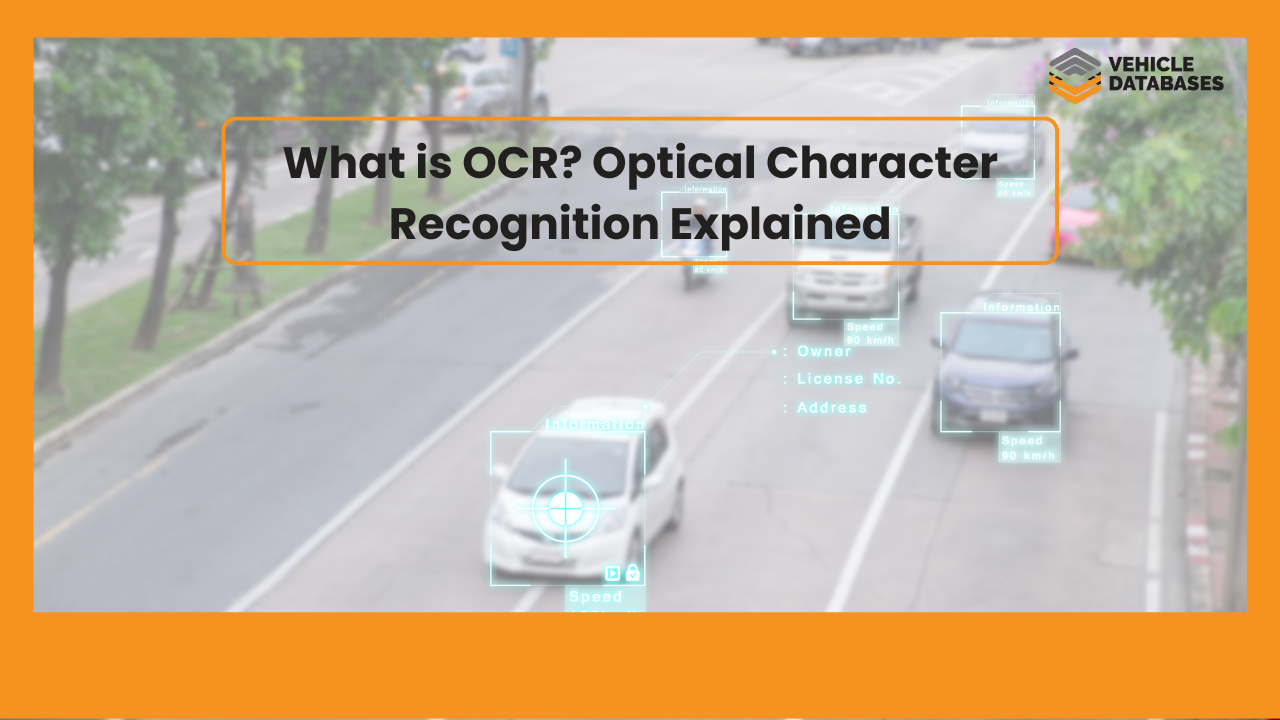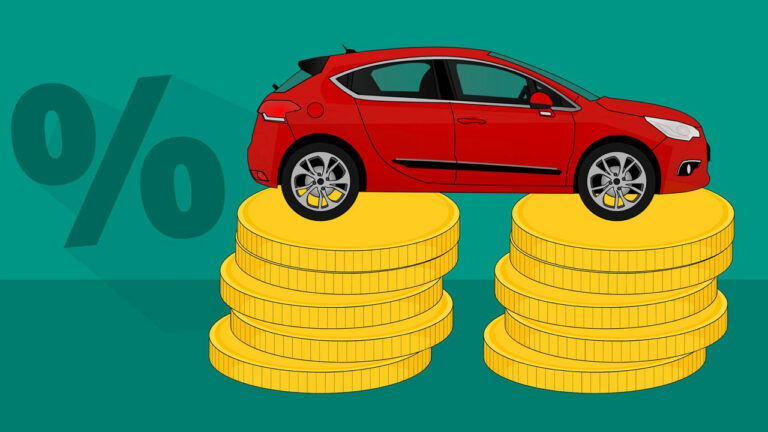Digitization has become a fundamental pillar in sustaining the exponential growth of information and communication technology (ICT). Enabling computers and machines with optical capabilities—optical character recognition (OCR) has helped revolutionize digitization.
This article will provide a comprehensive overview of OCR, from its definition to the technology behind it, including its benefits and applications.
What is OCR (Optical Character Recognition)?
Optical Character Recognition (OCR) converts an image text into a machine-readable text format. For instance, if you scan a document, your PC or mobile phone saves the result as an image file. This means you cannot edit or open it with a text editor like Microsoft Word or Google Docs. An OCR system converts the text included in the scanned image into an editable document.
Since OCR convert images into texts, many businesses rely on it to improve their users’ experience. Have you ever wondered how those automatic parking gates recognize cars? That’s OCR magic at work.
Some online automotive businesses, like Detailed Vehicle History, also uses OCR scanning API to add the image-to-text conversion to their VIN decoder product.
Why is OCR Important?
OCR technology enables computers to read text from digital image file formats, such as image files, scanned paper documents, printed documents, screenshots, image-only PDF files, handwritten text, and more.
With OCR technology, good enough cameras, such as phones and laptops, can recognize and extract text characters in digital image files.
There are various implementations for OCR, ranging from scanning documents to streamlining business workflow, promoting efficiency and productivity.
Ultimately, OCR’s primary advantage is that it minimizes manual data input by humans. It allows for the easy conversion of analog information, like physical letters and documents, into the digital world.
How Does OCR Work?
OCR software uses algorithms that range from traditional image processing to machine learning procedures. Generally, OCR software processes images in four steps:
1. Preprocessing
This stage prepares the image for reading by cleaning and removing errors. Different text areas are identified, and individual characters or words are isolated. The shape, size, and stroke patterns of individual elements are recognized and readied for classification.
2. Classification
Here, the OCR software recognizes the elements to a database of known characters and compares the patterns to obtain the best matches. Effective machine learning and pattern recognition techniques are needed to improve image-to-text accuracy over time.
3. Postprocessing
This stage is where the characters are identified and converted into machine-readable formats like ASCII or Unicode to allow for the electronic storage and editing of text. This has greatly transformed the automation of tasks like content extraction, data entry, and document indexing, thus saving time and costs.
READ ALSO: How Auto Insurance Companies Can Get Accurate Vehicle Information
What are the Different Types of OCR Technology?
Based on the use and applications, below are the classifications of OCR technologies:
1. Simple Optical Character Recognition Software (Simple OCR)
This analyzes character-by-character pattern matching by comparing scanned characters to stored glyphs. The technology is simple, but the types of documents that can be analyzed are limited.
2. Intelligent Character Recognition Software (ICR)
The ICR leverages the full power of artificial intelligence (AI). The OCR software is trained using machine learning (ML) or deep learning to read like humans.
3. Intelligent Word Recognition (IWR)
Optical word recognition is a natural upgrade of ICR software. In this case, the AI has been trained to capture a word in a single image, thus being faster than the ICR.
4. Optical Mark Recognition (OMR)
This is used to recognize checkboxes and similar marks, including bubbles of a signature on a form, symbols, logos, and watermarks. Just like a simple OCR, They can all be identified by matching to stored images.
READ ALSO: The Best Car Value API Providers
The Advantages of OCR Software?
The main benefits of OCR software or technology include the following:
1. Digitization of Text
An OCR tool helps transform printed text into a digital format that can be read by a machine, stored and edited. This means you can convert the information into digitally editable text in physical documents like name cards, flyers, letters, etc.
2. Searchability
By making it possible to search scanned documents and images, users can quickly find specific information in a collection of large documents.
An obvious example that you probably didn’t know is from an app like Google Photos. It uses OCR to recognize texts in images and index your photos based on the text contained.
If you have a photo of your ID card or driver’s license in your Google Photos gallery, try searching for “ID card” or “driver’s license” – those photos will appear.
3. Time and Cost Savings
OCR enables automated processing of analog signals into digital signals. For businesses, this translates into reduced expenses and time spent manually entering information.
An example of OCR implementation is Detailed Vehicle History, whose VIN decoder app uses the OCR API to recognize VIN and license plate numbers from images and cameras, making the app easier for users to use.
4. Efficient Document Archiving and Management
OCR makes digitizing document records and archives easy, thus enhancing document retrieval and reducing the need for physical storage.
This also means safer storage of important documents. So, in case you lose important physical documents, like bills of sale, car titles, or insurance, you can still find them as digital assets.
READ ALSO: The Use of APIs in the Automotive Industry
What are the Disadvantages of OCR?
There are some shortcomings identified with OCR technology, including:
- Difficulty in handwriting recognition as an OCR tool tends to operate better with printed text than handwritten text.
- OCR’s ability to easily extract sensitive information from papers may threaten information security and confidentiality.
- Some OCR software is costly since there might be a need for recurring subscription fees or licensing.
- Since the output may not be totally error-free, manual proofreading, especially for special texts, may still be necessary.
OCR Use Cases and Applications: How Does OCR Help?
Several applications and businesses power OCR technologies, including automotive, banking, forensics, manufacturing, healthcare, defense, and aerospace.
Here are the general use cases of OCR technology:
- The automation of data entry, extraction, and processing.
- Electronic deposition of bank cheques without the need to visit the banking hall.
- Decoding documents into readable text for the visually-impaired users.
- Word translation in an image into a specific language.
- Text recognition, such as VINs and license plates, using a camera or software.
Aside from the OCR scanner API to read VINs and license plates from images, automotive businesses like auto insurance, used car websites, and dealerships can utilize the VIN decoding API and license plate API provided by VehicleDatabases to retrieve detailed information on a car’s specifications, engine, transmission and more to make an informed decision.
RELATED: How Does the License Plate to VIN API Work?
How Can Vehicle Databases Help with OCR?
With the OCR scanning API from VehicleDatabases, you can access the best-in-class solutions for capturing VINs and license plate numbers from images or cameras, even under low illumination conditions.
Conclusion
OCR has continued to advance since its introduction in 1974 by Ray Kurzweil, the founder of Kurzweil Computer Products, Inc. Modern OCR tools can now perform optimally with unfavorable factors like poor resolution, bad lighting, colors, backgrounds, and irregular fonts or handwriting.
Old technologies must continue learning new tricks since AI now drives many OCR systems to assist in faster structuring and retrieving of document data.
READ ALSO: The 5 Different Types of Vehicle Data APIs
Frequently Asked Question
An OCR engine or software converts printed documents into digital image files. It uses automation to transform scanned documents into machine-readable PDFs that can be edited and shared.
Image preprocessing procedures like binarization, noise reduction, and contrast adjustment can significantly impact the accuracy of an OCR solution. External factors like lighting conditions and scanner stability can also influence accuracy.
Vehicledatabases provides the OCR scanning API, which can be integrated into applications and software to scan VIN and license plate numbers from images. Similar vehicle data APIs, including the VIN decoding API and License plate API, are provided by Vehicledatabases.



